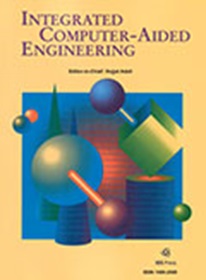利用模糊深度神经网络进行不平衡类别的多标签分类
IF 5.3
2区 计算机科学
Q1 COMPUTER SCIENCE, ARTIFICIAL INTELLIGENCE
引用次数: 0
摘要
在分类问题中,每个数据实例都同时与多个标签相关联,多标签分类是一种管理不确定性的有利技术。这种情况在现实世界中经常出现,在这种情况下,决策依赖于不精确或有噪声的数据,而适应性强的分类方法是首选。然而,类不平衡问题是多个多标签数据集的共同特征,其中样本及其相应标签在整个数据空间的分布是不均匀的。本文提出了一种利用模糊逻辑的多标签分类方法,以解决类不平衡问题。为了消除由专家来确定推理逻辑规则的需要,我们采用了深度神经网络,事实证明它对此类问题非常有效。通过将模糊推理系统和深度神经网络结合起来,可以减轻每种方法的优缺点。作为进一步的发展,还采用了时间序列的符号表示法,以降低数据维度并加快训练过程。这使得模型的应用更加灵活,特别是在因观测时间序列的因果关系而产生的时间限制方面。在与几种家用电器的电流和电压曲线相关的多标签分类数据集上进行的测试表明,所提出的模型在时间序列分类方面优于四个基准模型。本文章由计算机程序翻译,如有差异,请以英文原文为准。
Multi-label classification with imbalanced classes by fuzzy deep neural networks
Multi-label classification is an advantageous technique for managing uncertainty in classification problems where each data instance is associated with several labels simultaneously. Such situations are frequent in real-world scenarios, where decisions rely on imprecise or noisy data and adaptableclassification methods are preferred. However, the problem of class imbalance represents a common characteristic of several multi-label datasets, in which the distribution of samples and their corresponding labels is non-uniform across the data space. In this paper, we propose a multi-label classification approach utilizing fuzzy logic in order to deal with the class imbalance problem. To eliminate the need for an expert to determine the logical rules of inference, deep neural networks are adopted, which have proven to be exceptionally effective for such problems. By combining both fuzzy inference systems and deep neural networks, the strengths and weaknesses of each approach can be mitigated. As a further development, a symbolic representation of time series is put in place to reduce data dimensionality and speed up the training procedure. This allows for more flexibility in model application, in particular with respect to time constraints arising from the causality of observed time series. Tests carried out on a multi-label classification dataset related to the current and voltage profiles of several household appliances show that the proposed model outperforms four baseline models for time series classification.
求助全文
通过发布文献求助,成功后即可免费获取论文全文。
去求助
来源期刊

Integrated Computer-Aided Engineering
工程技术-工程:综合
CiteScore
9.90
自引率
21.50%
发文量
21
审稿时长
>12 weeks
期刊介绍:
Integrated Computer-Aided Engineering (ICAE) was founded in 1993. "Based on the premise that interdisciplinary thinking and synergistic collaboration of disciplines can solve complex problems, open new frontiers, and lead to true innovations and breakthroughs, the cornerstone of industrial competitiveness and advancement of the society" as noted in the inaugural issue of the journal.
The focus of ICAE is the integration of leading edge and emerging computer and information technologies for innovative solution of engineering problems. The journal fosters interdisciplinary research and presents a unique forum for innovative computer-aided engineering. It also publishes novel industrial applications of CAE, thus helping to bring new computational paradigms from research labs and classrooms to reality. Areas covered by the journal include (but are not limited to) artificial intelligence, advanced signal processing, biologically inspired computing, cognitive modeling, concurrent engineering, database management, distributed computing, evolutionary computing, fuzzy logic, genetic algorithms, geometric modeling, intelligent and adaptive systems, internet-based technologies, knowledge discovery and engineering, machine learning, mechatronics, mobile computing, multimedia technologies, networking, neural network computing, object-oriented systems, optimization and search, parallel processing, robotics virtual reality, and visualization techniques.
 求助内容:
求助内容: 应助结果提醒方式:
应助结果提醒方式:


